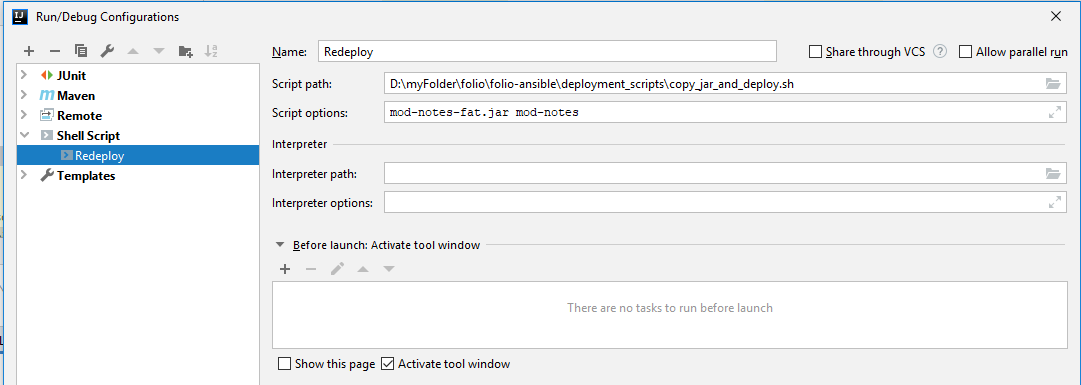/
How to automate redeployment of backend modules in Vagrant
How to automate redeployment of backend modules in Vagrant
This guide is based on How to automate new modules’ registration within folio/testing-backend Vagrant box. It provides shell scripts for re-registering/redeploying modules in folio/testing Vagrant box.
The goal is to set up a script that will be run after module is built. The script will copy all necessary files, build docker image, register and deploy it inside of Vagrant box.
This guide assumes that Okapi already has a version of the same module registered and deployed. The script will only replace old module with new one, it won't register module from scratch.
Additionally version of new module has to be greater or equal to the version of already deployed module
Related articles
, multiple selections available,
Related content
How to add/debug module in vagrant image (jar file)
How to add/debug module in vagrant image (jar file)
More like this
How to add/replace the module in Vagrant box (Docker image from Docker Hub)
How to add/replace the module in Vagrant box (Docker image from Docker Hub)
Read with this
How to automate new modules’ registration within folio/testing-backend Vagrant box.
How to automate new modules’ registration within folio/testing-backend Vagrant box.
More like this
How to run folio backend modules with IntelliJ Idea and interact with Vagrant box environment
How to run folio backend modules with IntelliJ Idea and interact with Vagrant box environment
Read with this
Vagrant Setup for ERM
Vagrant Setup for ERM
More like this
Run index on Rancher env with bugfest dataset
Run index on Rancher env with bugfest dataset
Read with this
